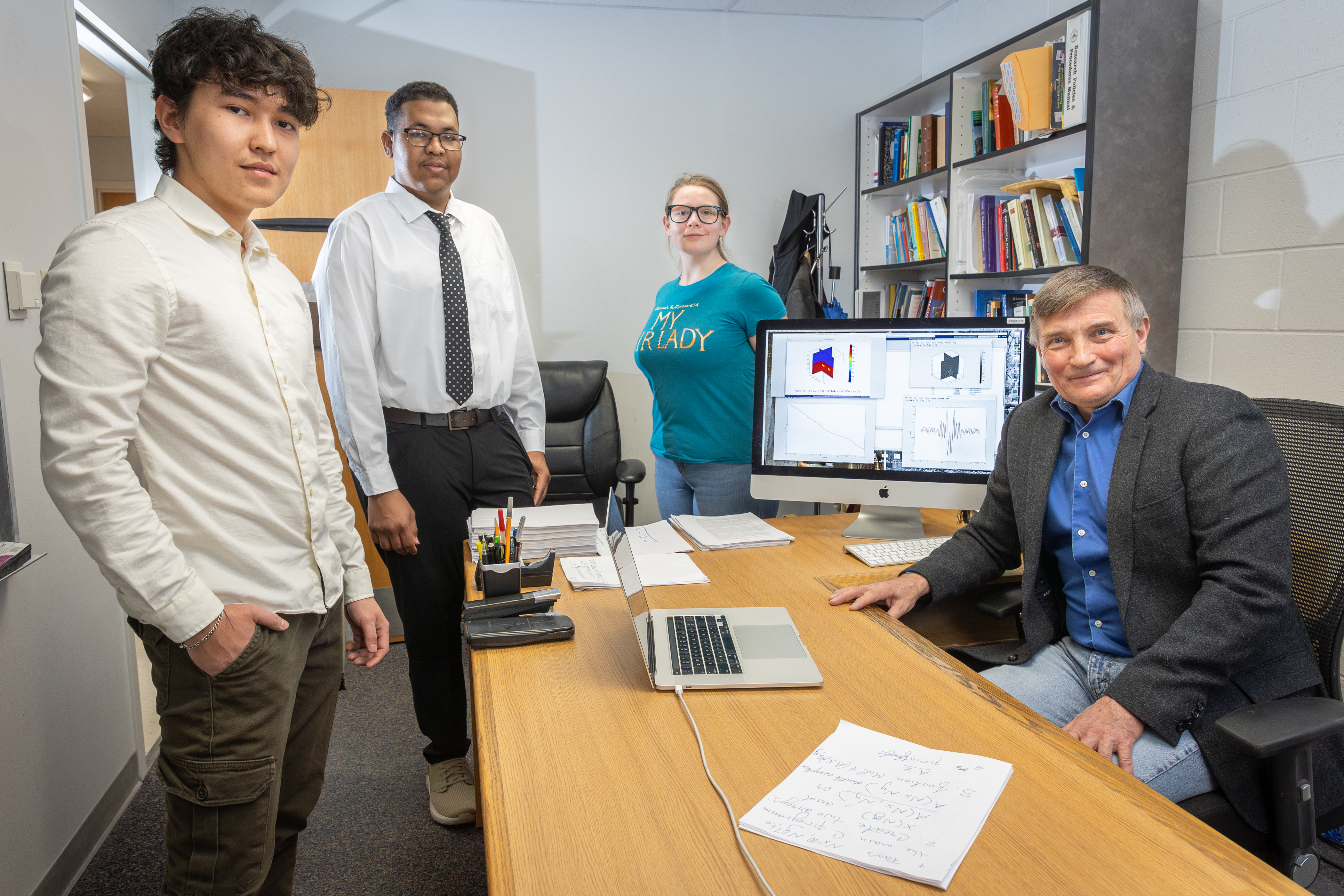Advanced Mathematical Modeling Research Using Machine Learning Gets Started at Idaho State University
April 25, 2024

Building accurate models relating to climate, machines, or the cosmos requires sophisticated mathematics. That's where folks like Idaho State University Professor Yury Gryazin and his students are stepping in.
Recently, Gryazin, an expert in numerical analysis and scientific computation, and his collaborators at the Berkeley Lab in California and Rice University in Texas started researching novel machine learning algorithms related to simulations and computer modeling. To support this effort, the U.S. Department of Energy awarded the team a $4 million grant under a newly established "Scientific Machine Learning for Complex Systems" program. Digital models are used across the STEM disciplines and simulate everything from Earth's weather and the movement of seismic waves to the operation of particle accelerators and nuclear reactors.
“Practically every new development is first modeled using advanced numerical approaches,” said Gryazin. “Recently, major advances in machine learning algorithms have opened new directions for developing faster and more accurate computational methods for such simulations.”
Gryazin and his students are focusing on the uncertainty quantification part of simulation problems. Typical uncertainty quantification problems of interest include certification, prediction, model and software verification and validation, parameter estimation, data assimilation, etc. Uncertainty quantification helps researchers determine how reliable the model's predictions are.
"You've probably seen a survey or poll with a margin of error of plus or minus a given percent," Gryazin said. "Uncertainty quantification is similar to that, except it is for models and simulations."
Because the development of many models requires data from sometimes millions—or more—data points, finding the margin of error for these scientific models is exponentially more complex than the average survey. Using advanced methods of applied mathematics and statistics, Gryazin and the students will create and train new neural network algorithms—a type of machine learning that is structured like a human brain—on already known data and will subsequently test their approach. During testing, the algorithm's success or failure will hinge on how well it can predict the correct results when given a new set of real-world data that was not present in the initial training set. Specifically, they'll work with algorithms used for subsurface imaging systems like those used to detect landmines, air pockets, pollutants, and more. Three students from multiple disciplines at Idaho State will be working on the project.
“This new opportunity to collaborate with experts from esteemed institutions like Berkeley Lab offers an invaluable chance for learning,” said Adil Ahmed, a junior majoring in mechanical engineering. “Also, working alongside leading researchers in the field makes this project especially exciting to be a part of.”
The group hopes to publish its initial results by the end of 2024, when their first new subsurface neural network algorithms will be developed and tested.
“Students working on this project will gain invaluable experience solving important problems in exciting new areas of research in collaboration with world-class researchers from the country's top scientific centers,” Gryazin said.
For more information on the Department of Mathematics and Statistics, visit isu.edu/math.
Categories:
